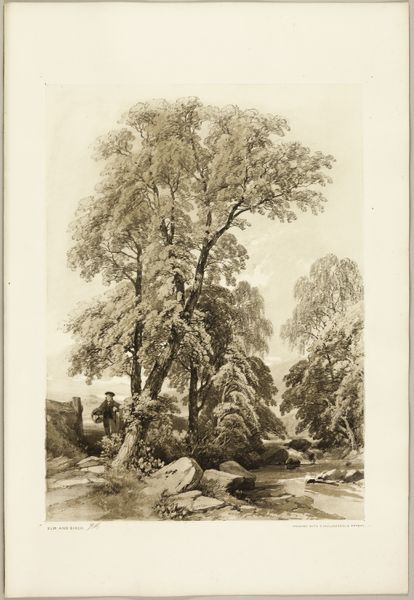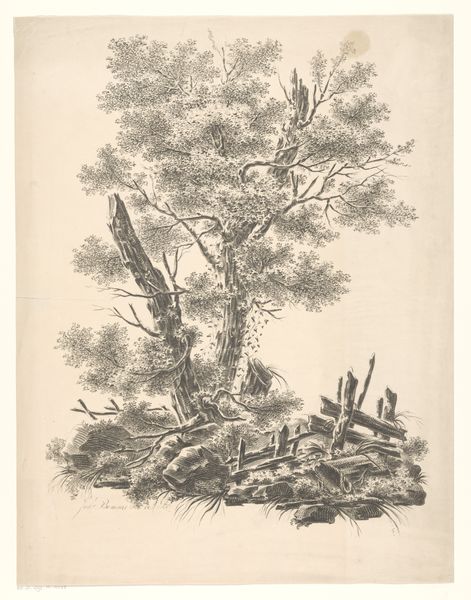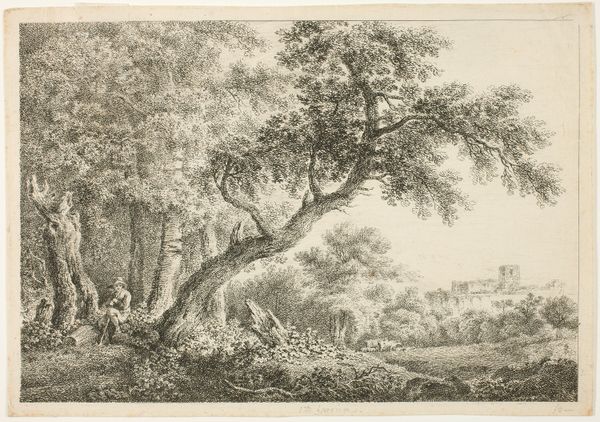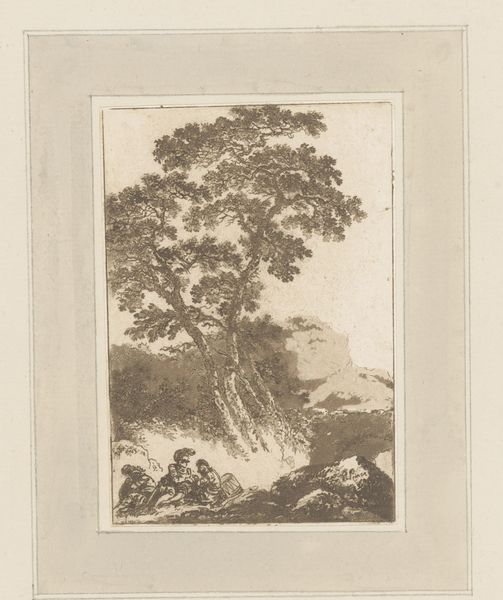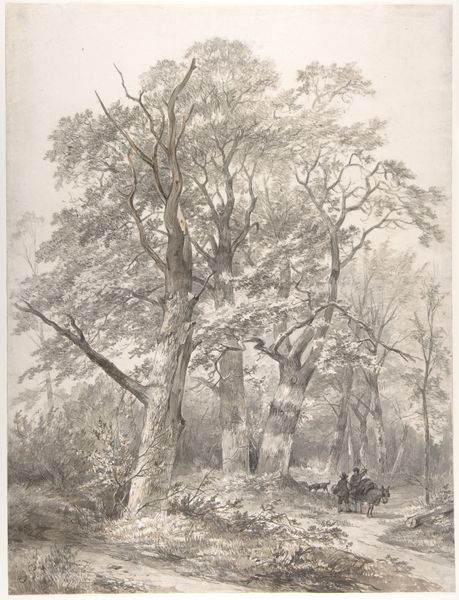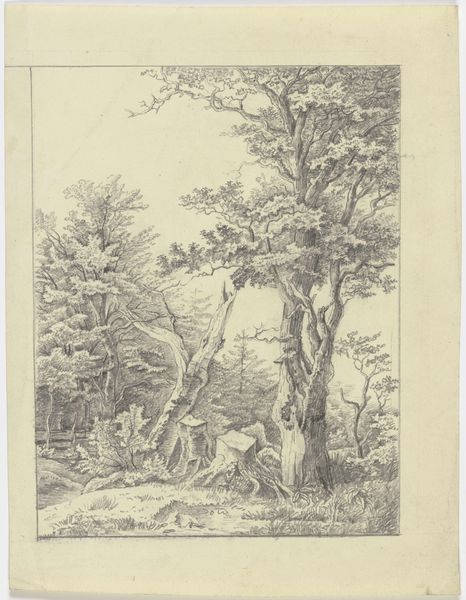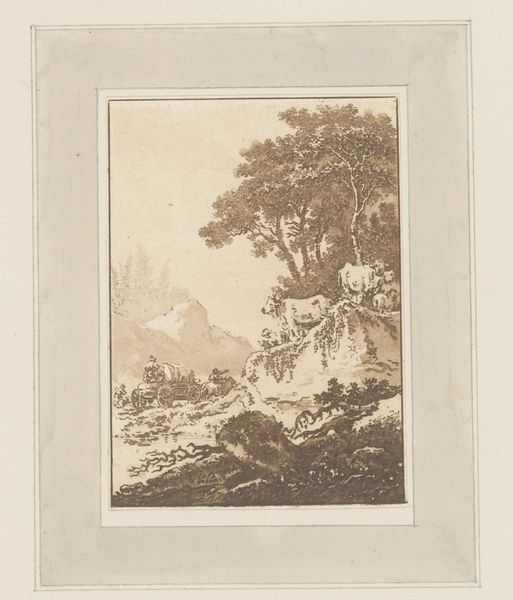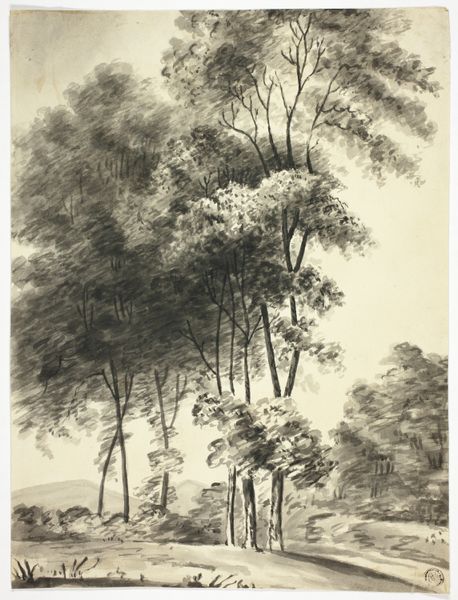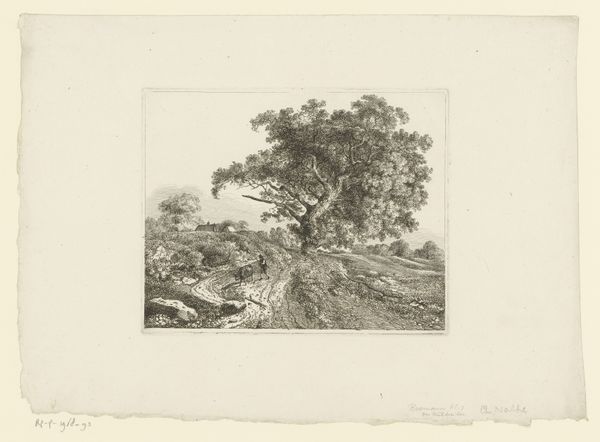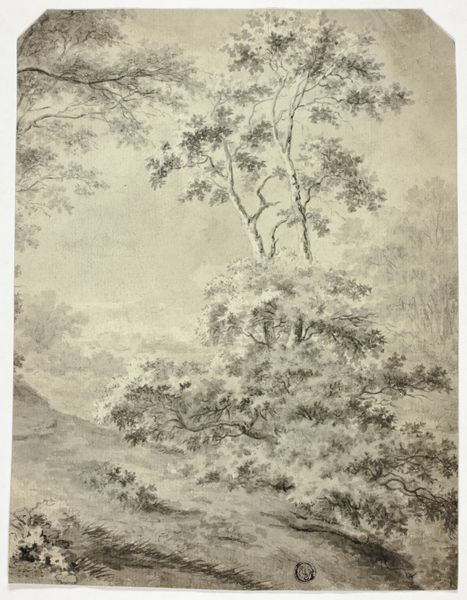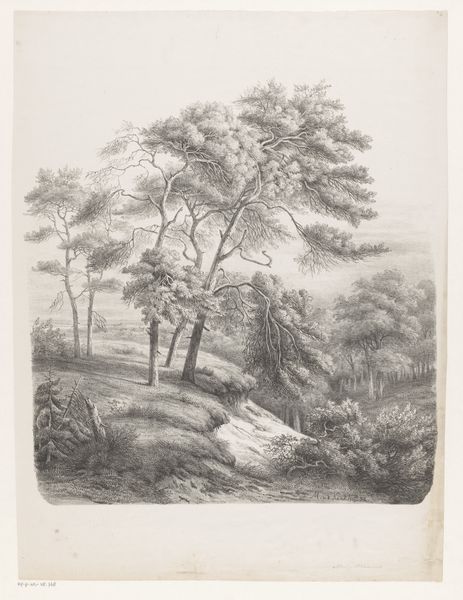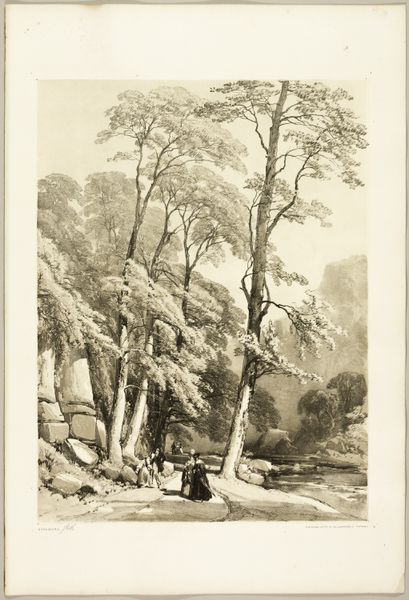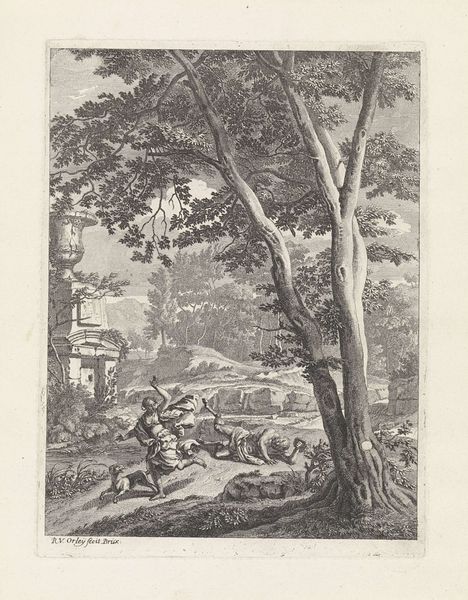
drawing, lithograph, print, paper
#
drawing
#
lithograph
# print
#
landscape
#
paper
#
romanticism
#
line
Dimensions: 395 × 293 mm (image); 541 × 369 mm (sheet)
Copyright: Public Domain
Curator: At first glance, this lithograph possesses such an inviting tonal range. The greys almost feel velvety, wouldn't you agree? Editor: Indeed! Formally speaking, Harding’s command of light is evident in how it sculpts the intertwining Scotch Firs, allowing the viewer’s eye to move gracefully towards the distant landscape. We are looking at "Scotch Fir, from The Park and the Forest," produced as a print in 1841 by James Duffield Harding. Curator: Harding's landscape prints gained immense popularity during the Victorian era. This work epitomizes the Romantic movement's fascination with nature as a space for contemplation. Picturesque views like this helped shape perceptions of the British countryside, popularizing it as a tourist destination for the emerging middle class. Editor: I’d like to add that Harding has expertly employed line and texture. The density of marks used to suggest the tree's foliage contrasts starkly against the relative openness of the sky, creating an arresting depth. Curator: I am particularly interested in the ruins of the castle visible on the hill in the distance. It suggests a commentary on the past and how nature and time reclaim even the most powerful structures. The print, therefore, seems less about topography and more about cultural commentary, don't you think? It is as if it were deliberately curated to present a particular version of British identity that favored the integration of old romantic ideas of the "noble ruin." Editor: While cultural contexts always bear consideration, here, the rhythmic repetition of the tree branches leads me to see Harding's emphasis is clearly on form. Look at the way the tree trunks form a subtle "X" shape in the foreground. He skillfully uses negative space to direct our gaze through the composition. Curator: Fair enough, although I still perceive it as more than just lines. This landscape catered to a society that saw itself reflected in the picturesque view, confirming specific ideals about ownership, heritage, and progress during significant social and industrial change. Editor: Well, either way, Harding has offered us much to think about! It is rare to see a print this engaging so it’s wonderful to know how carefully constructed it is, on multiple levels.
Comments
No comments
Be the first to comment and join the conversation on the ultimate creative platform.
